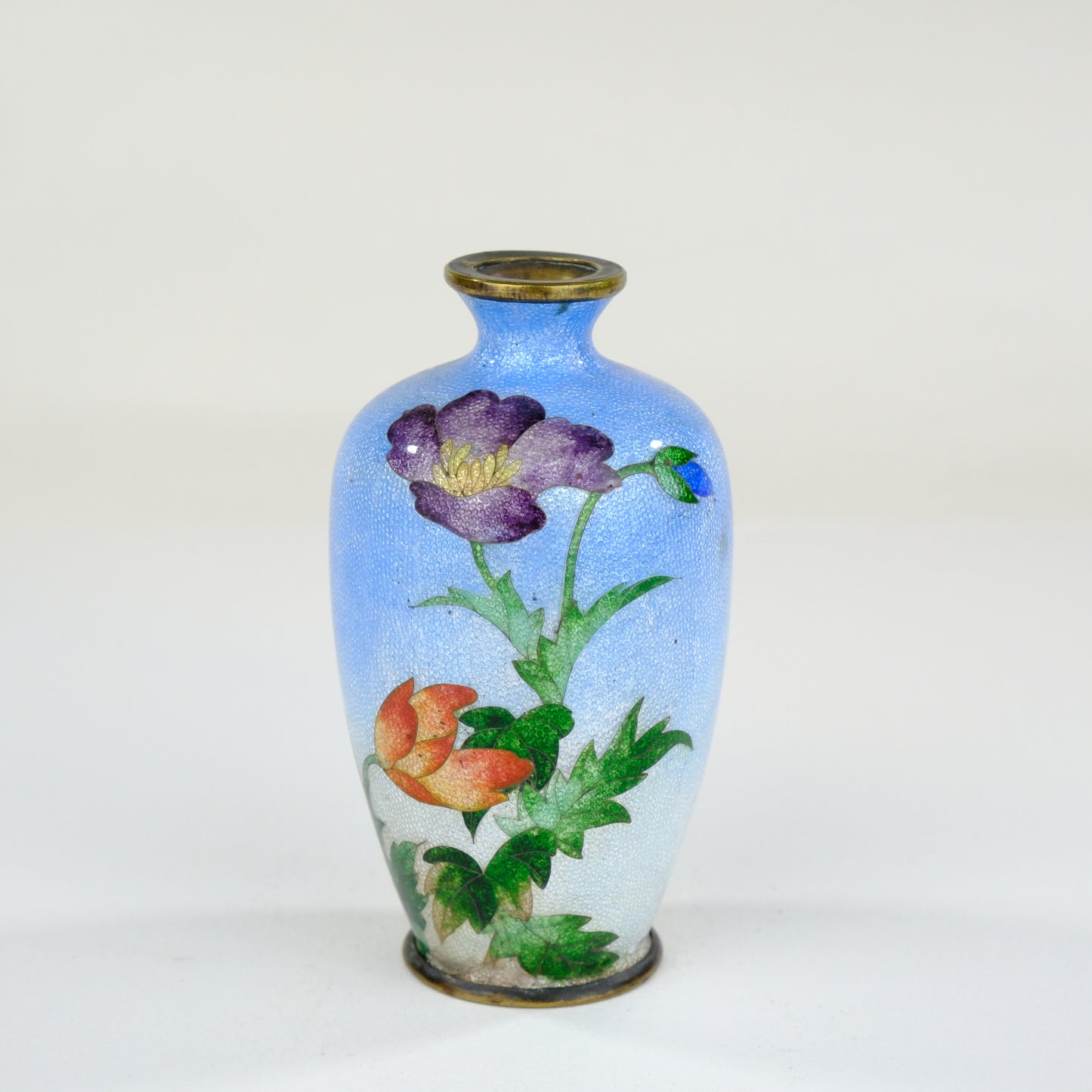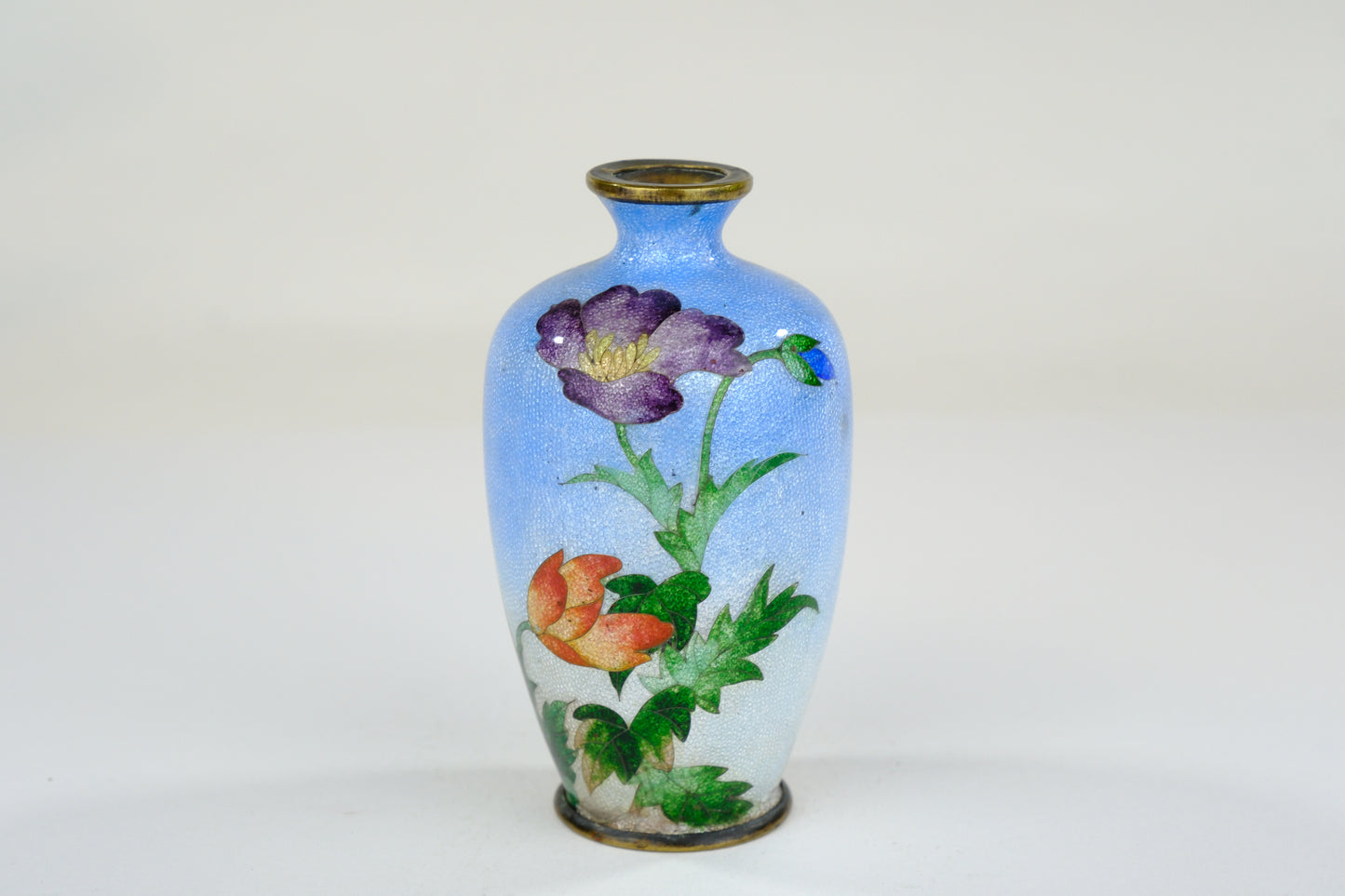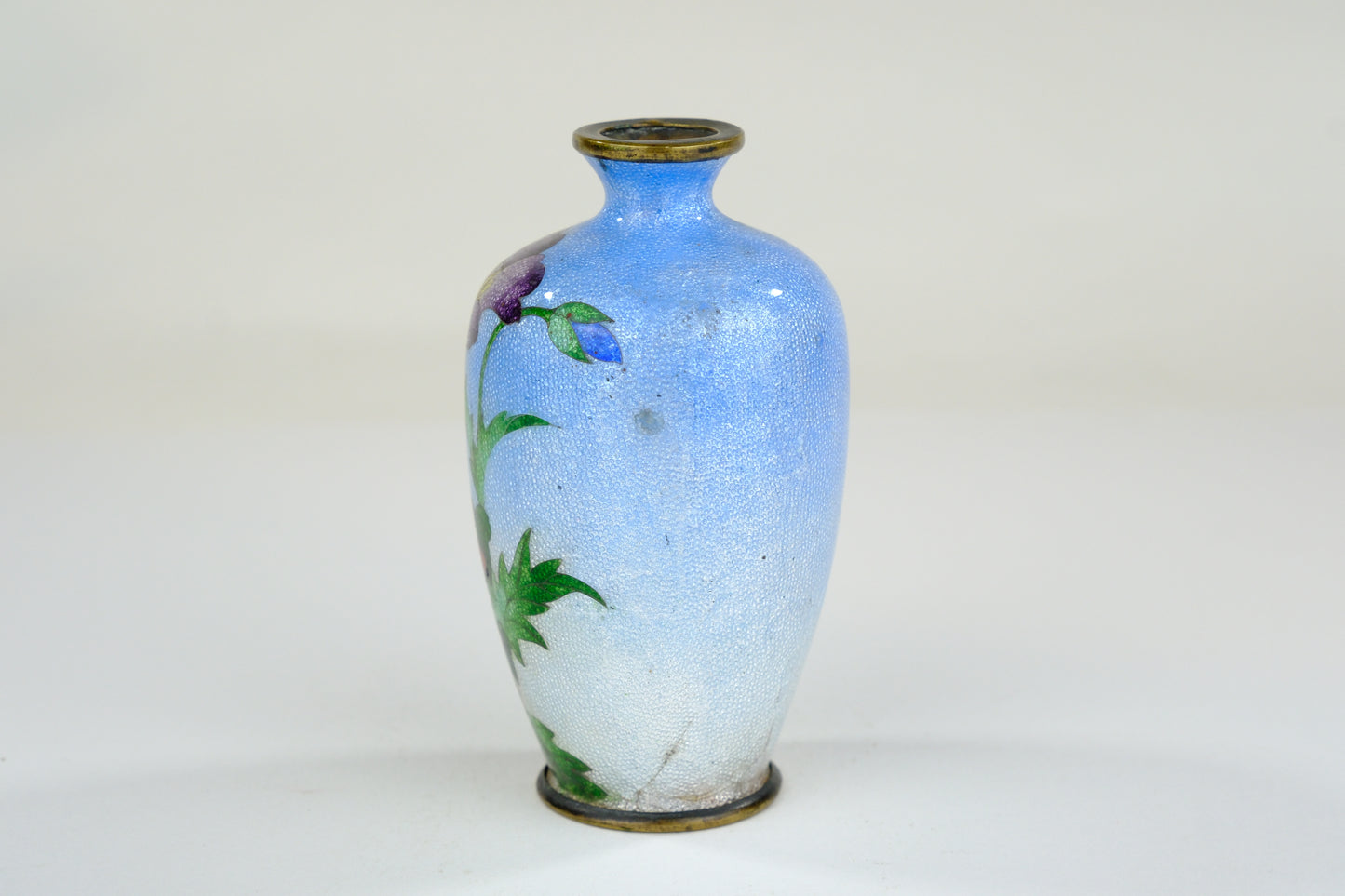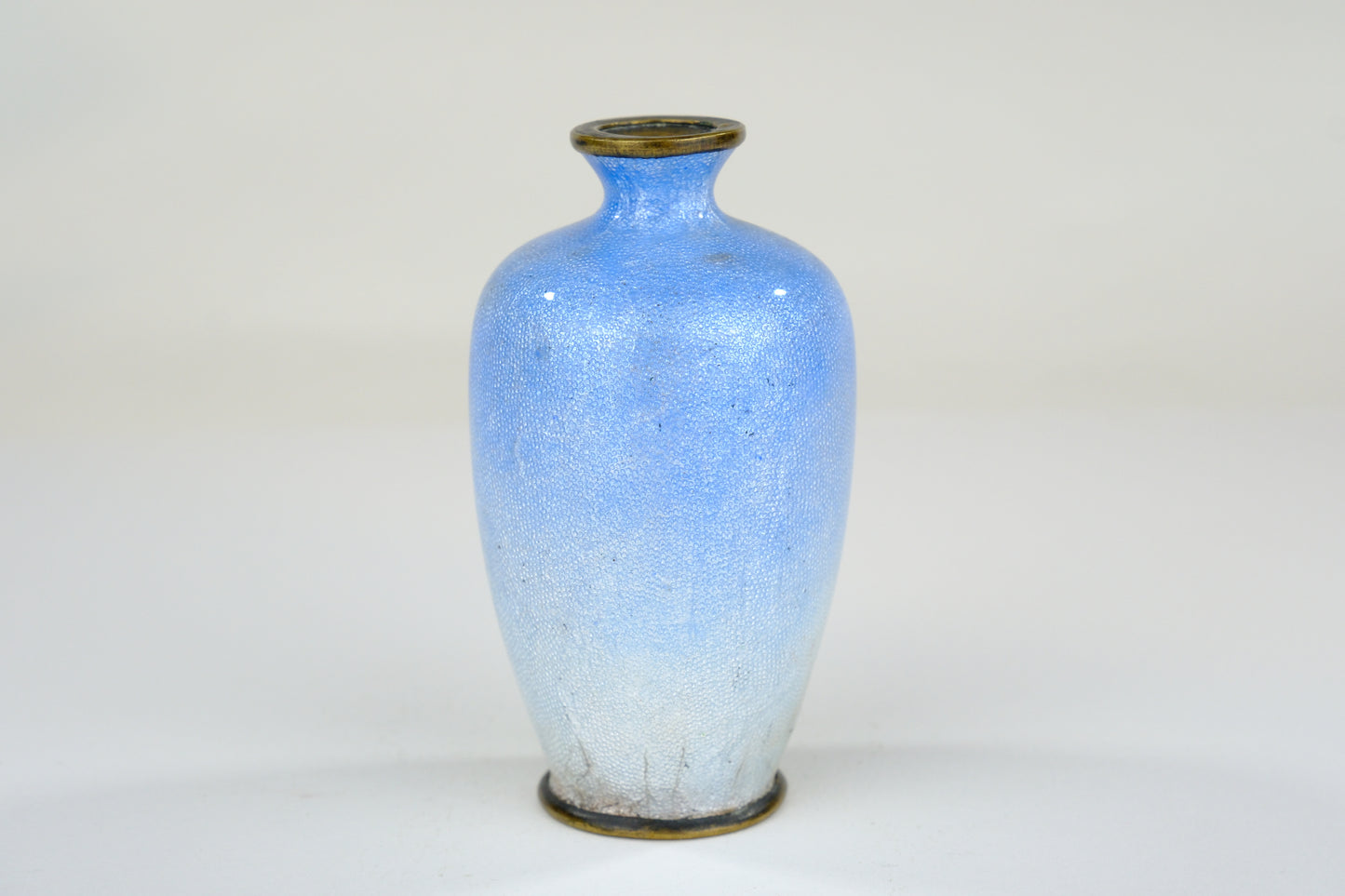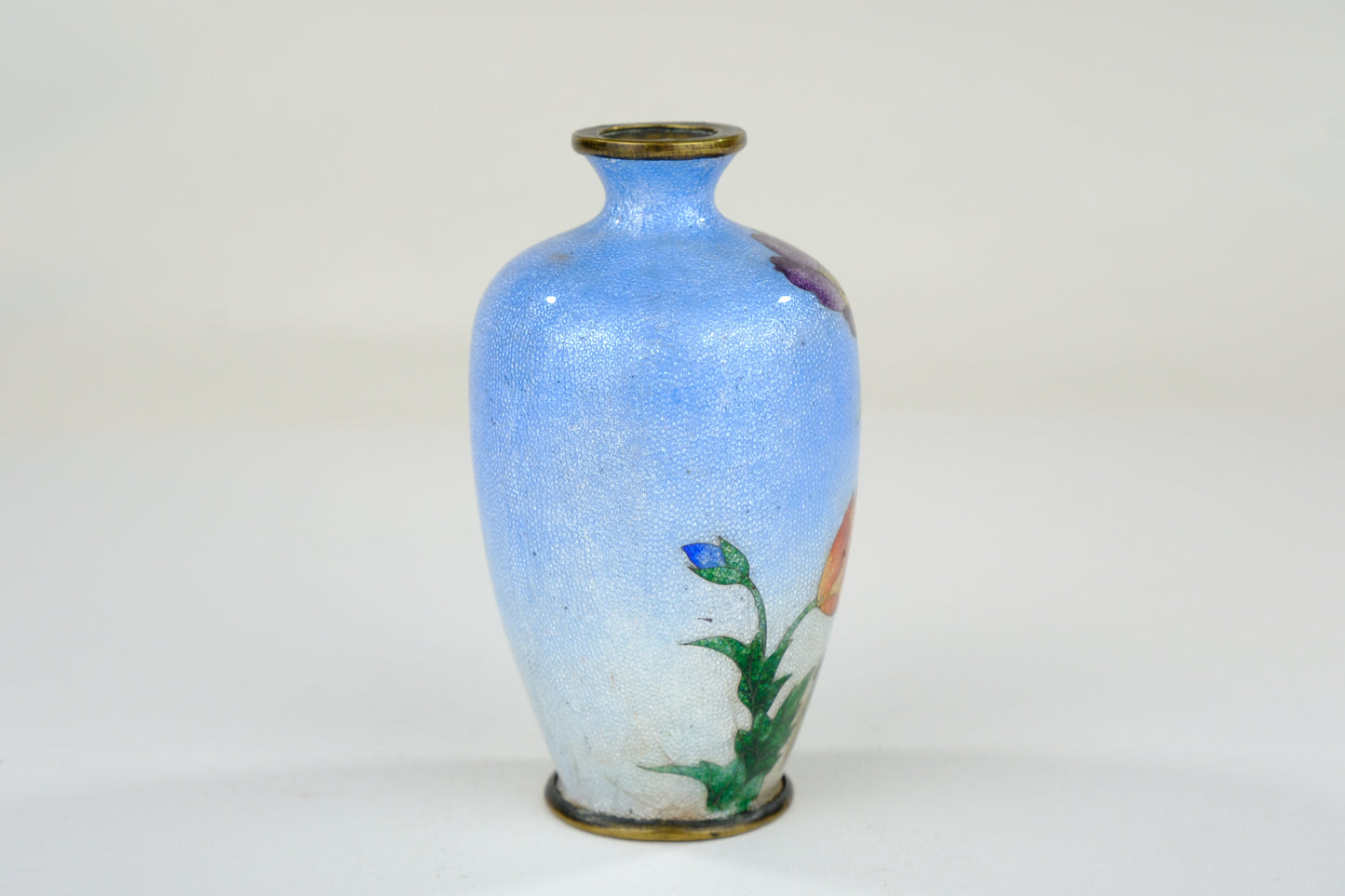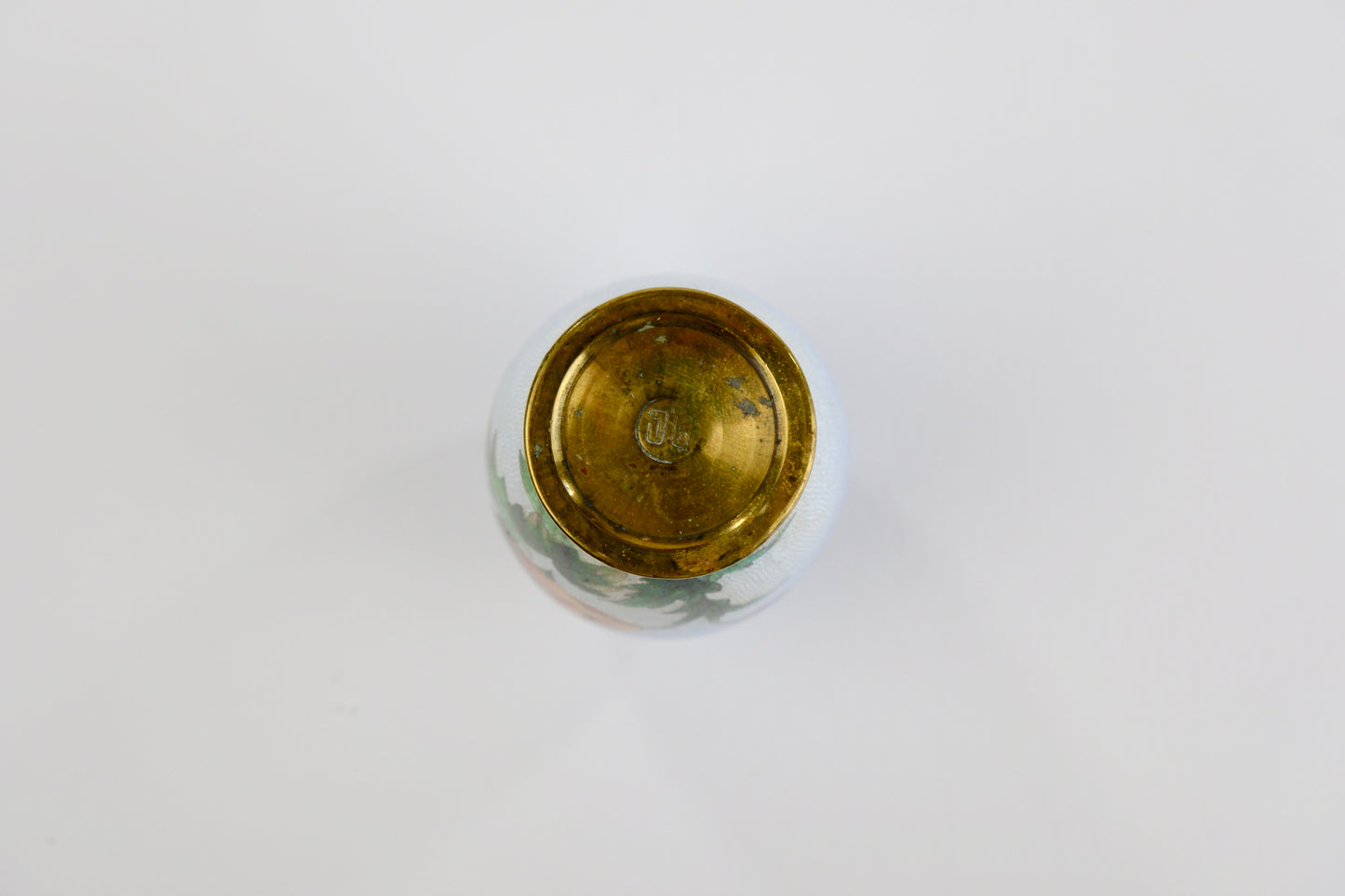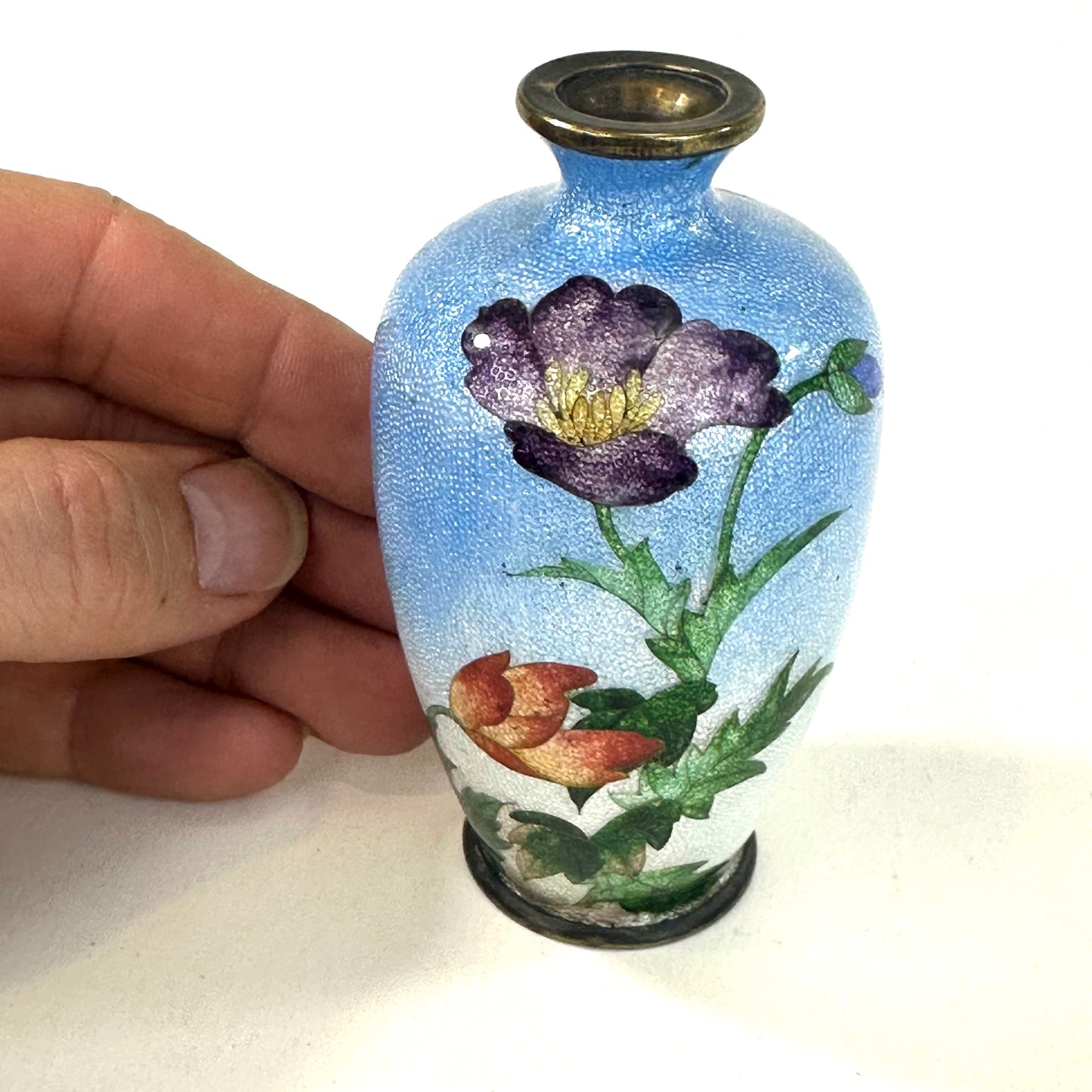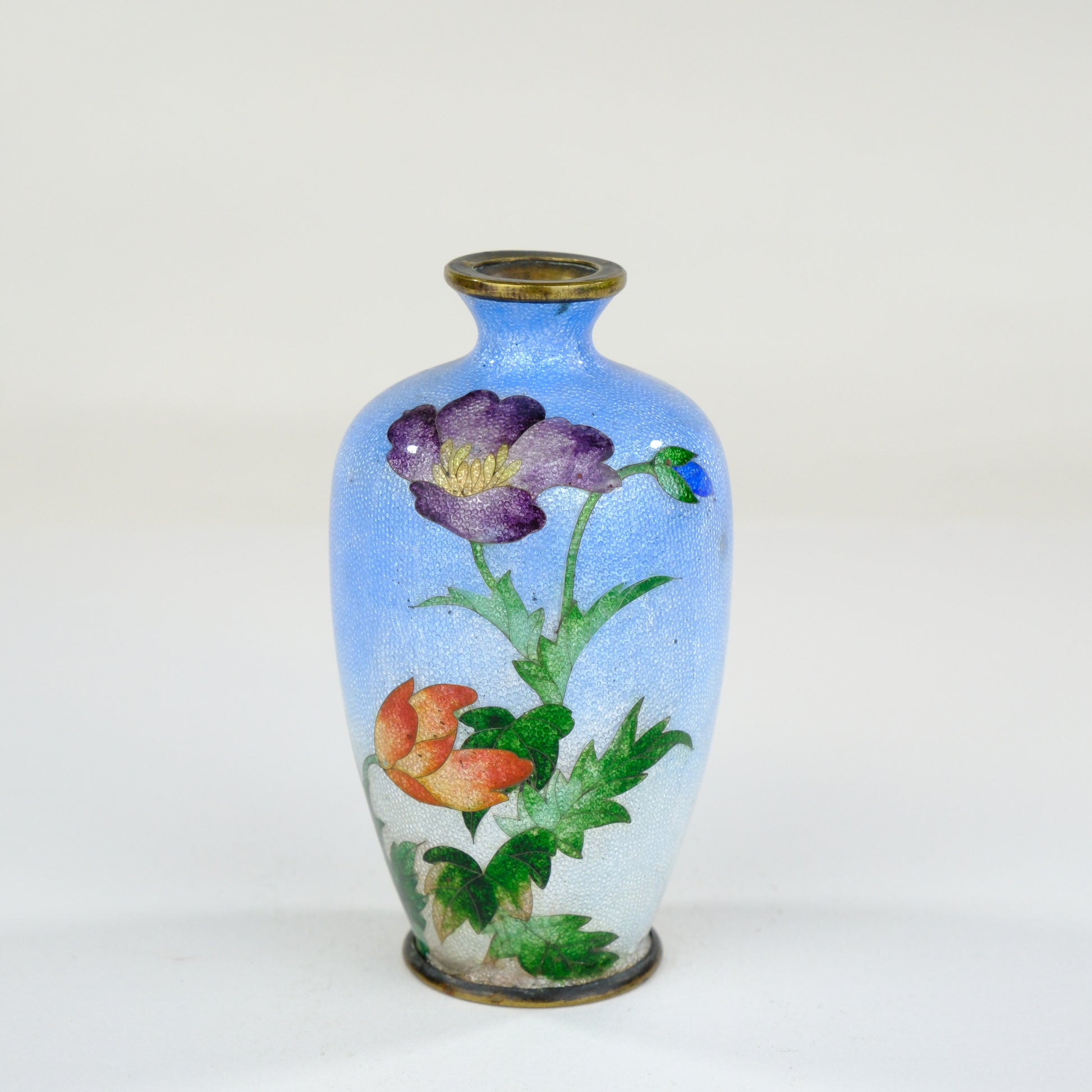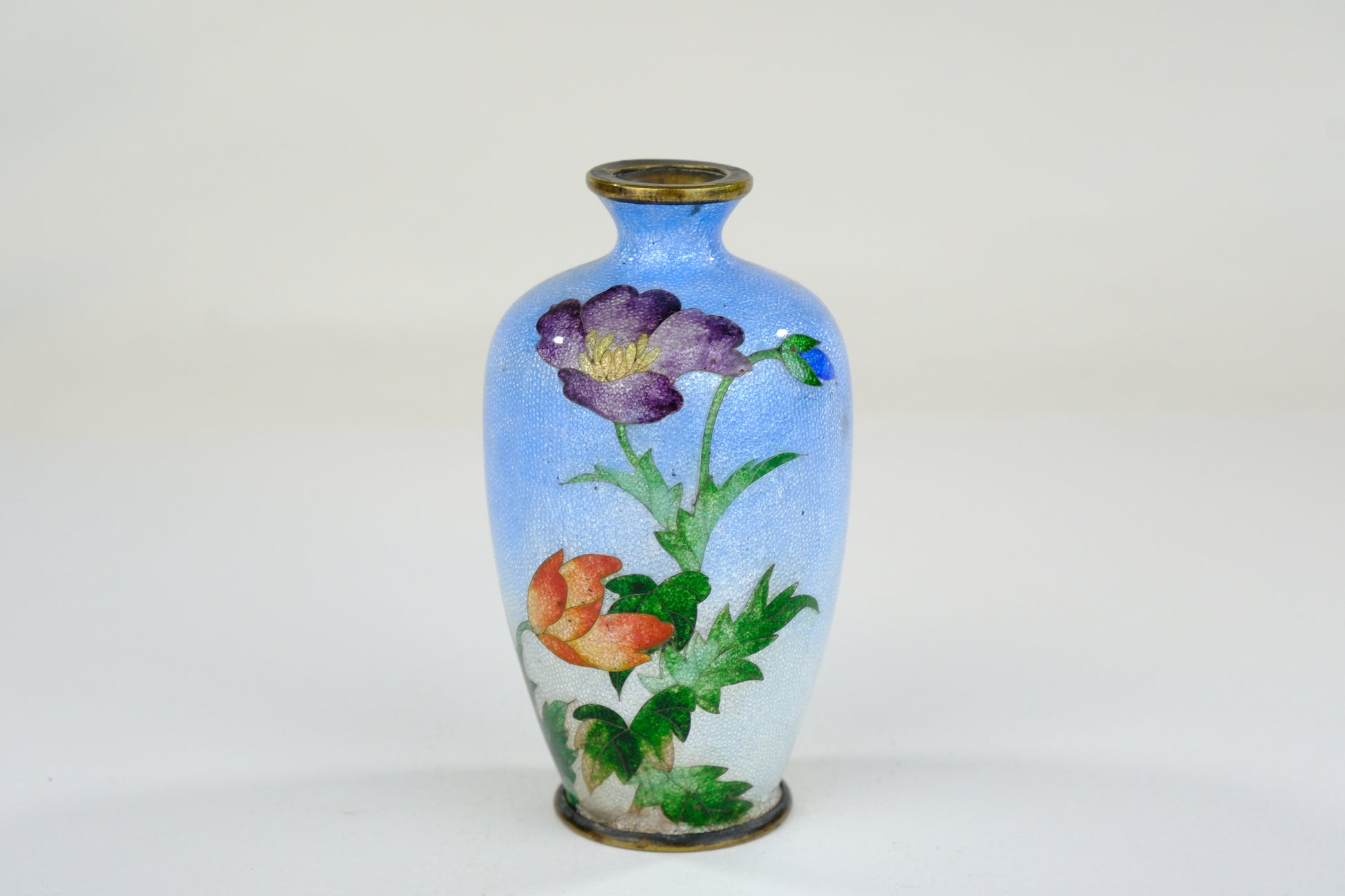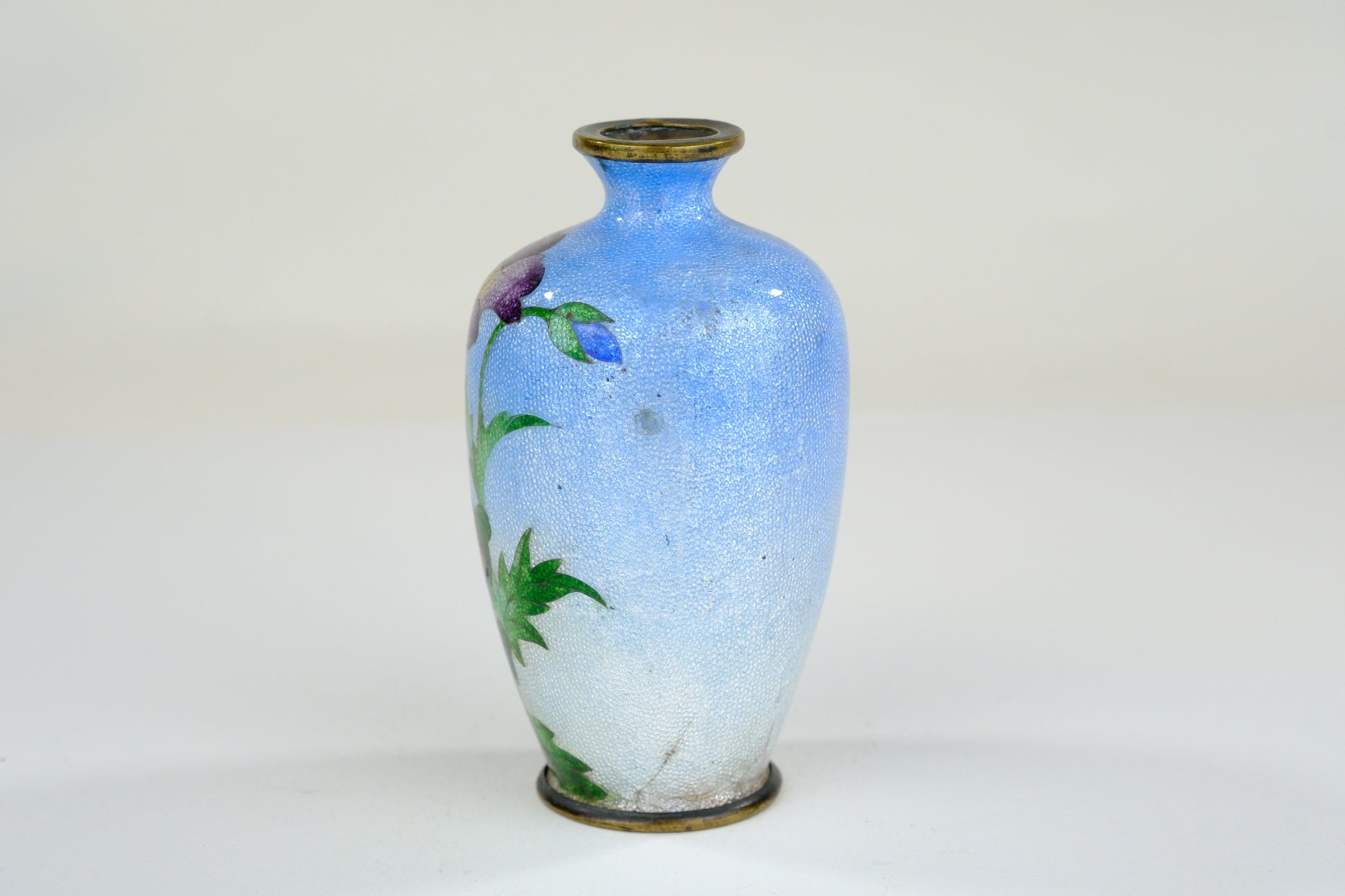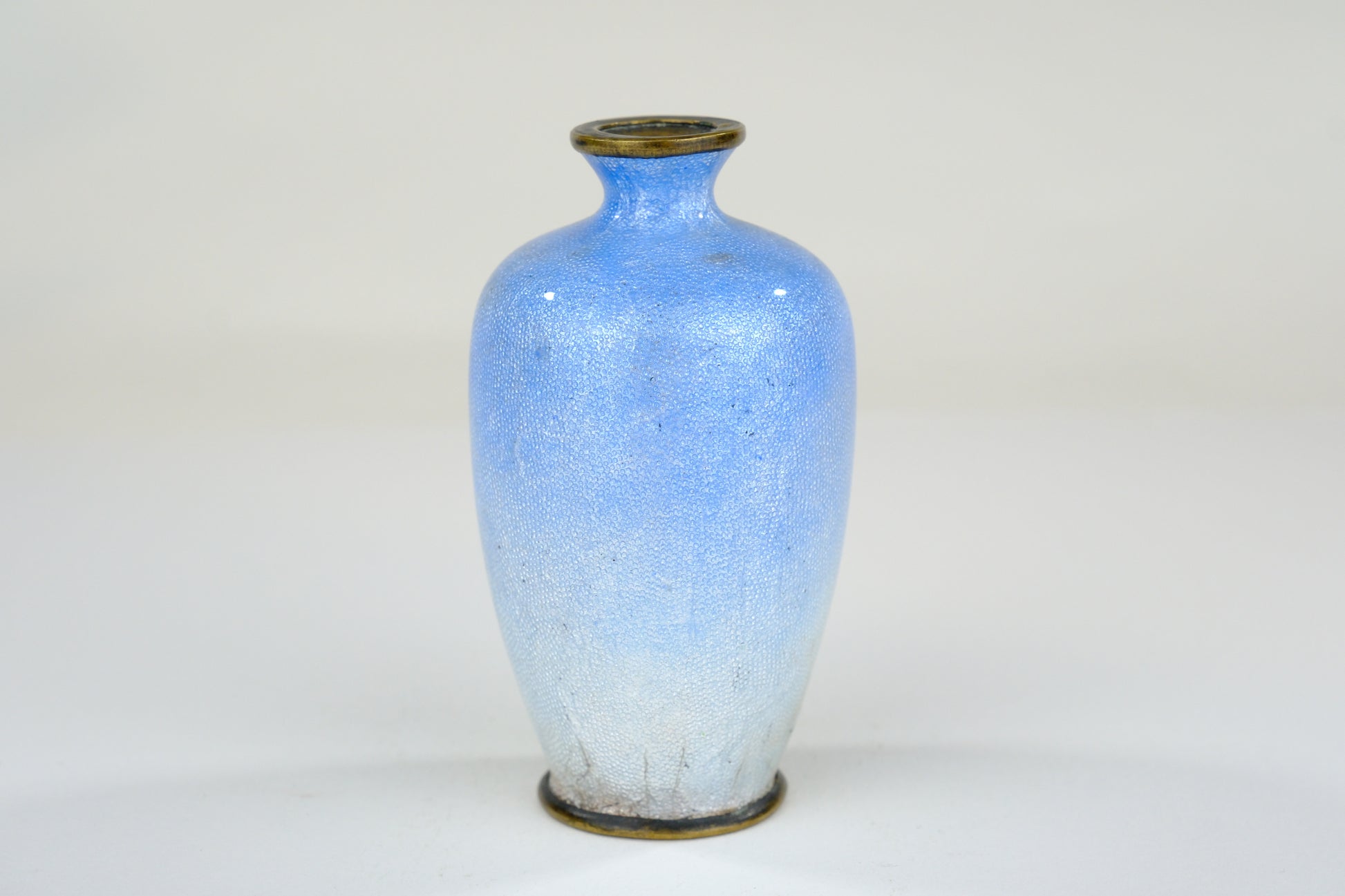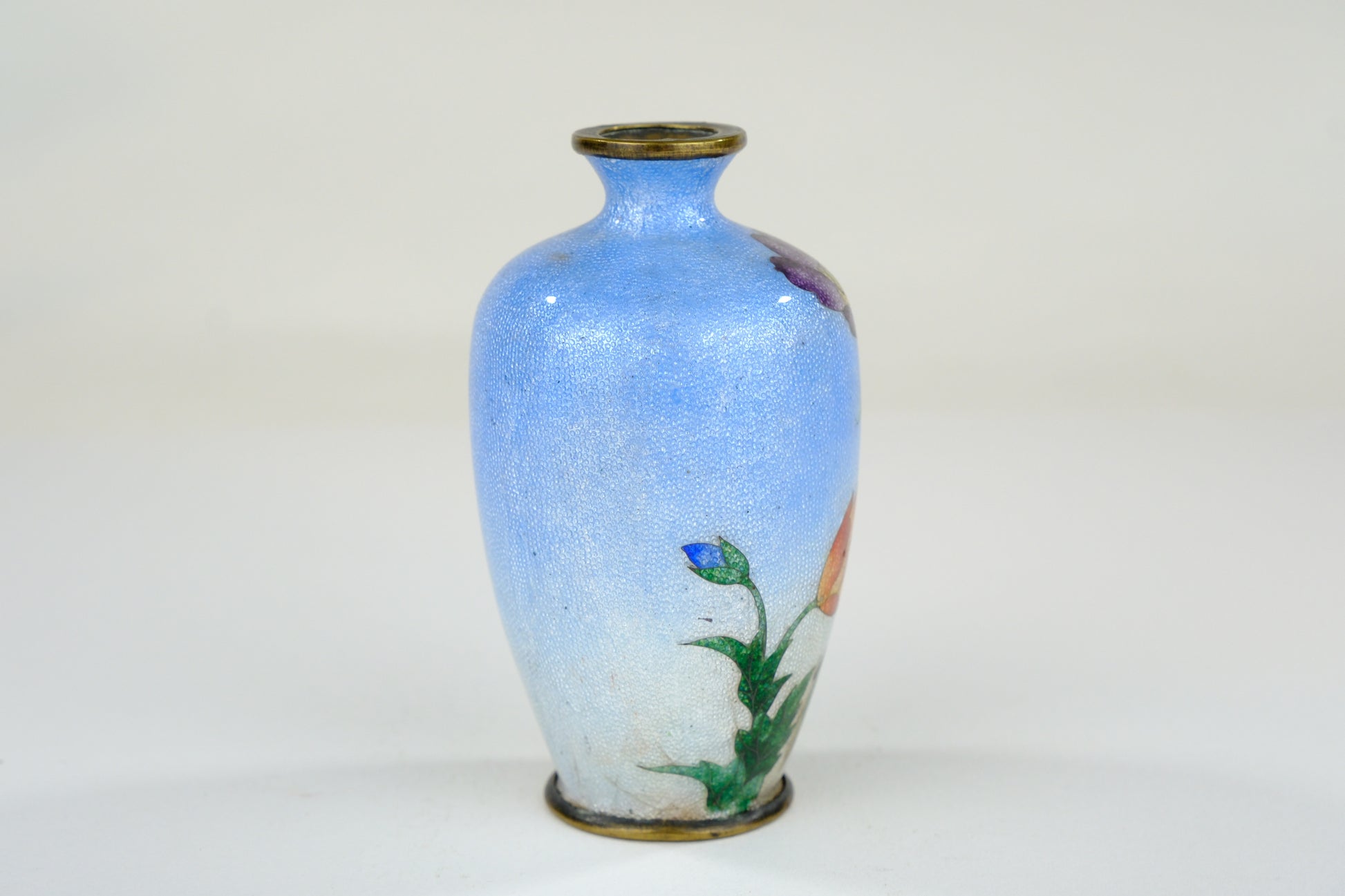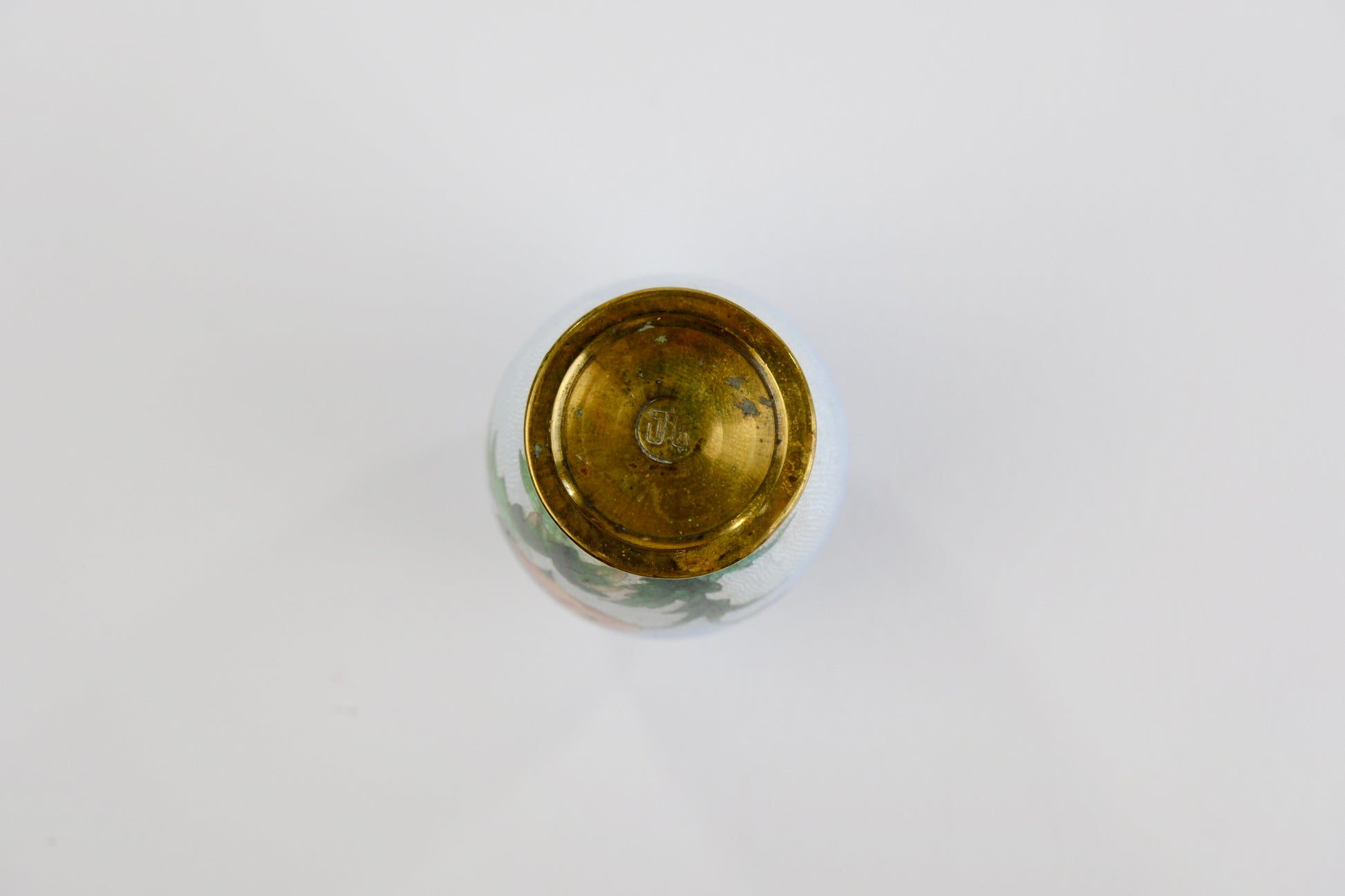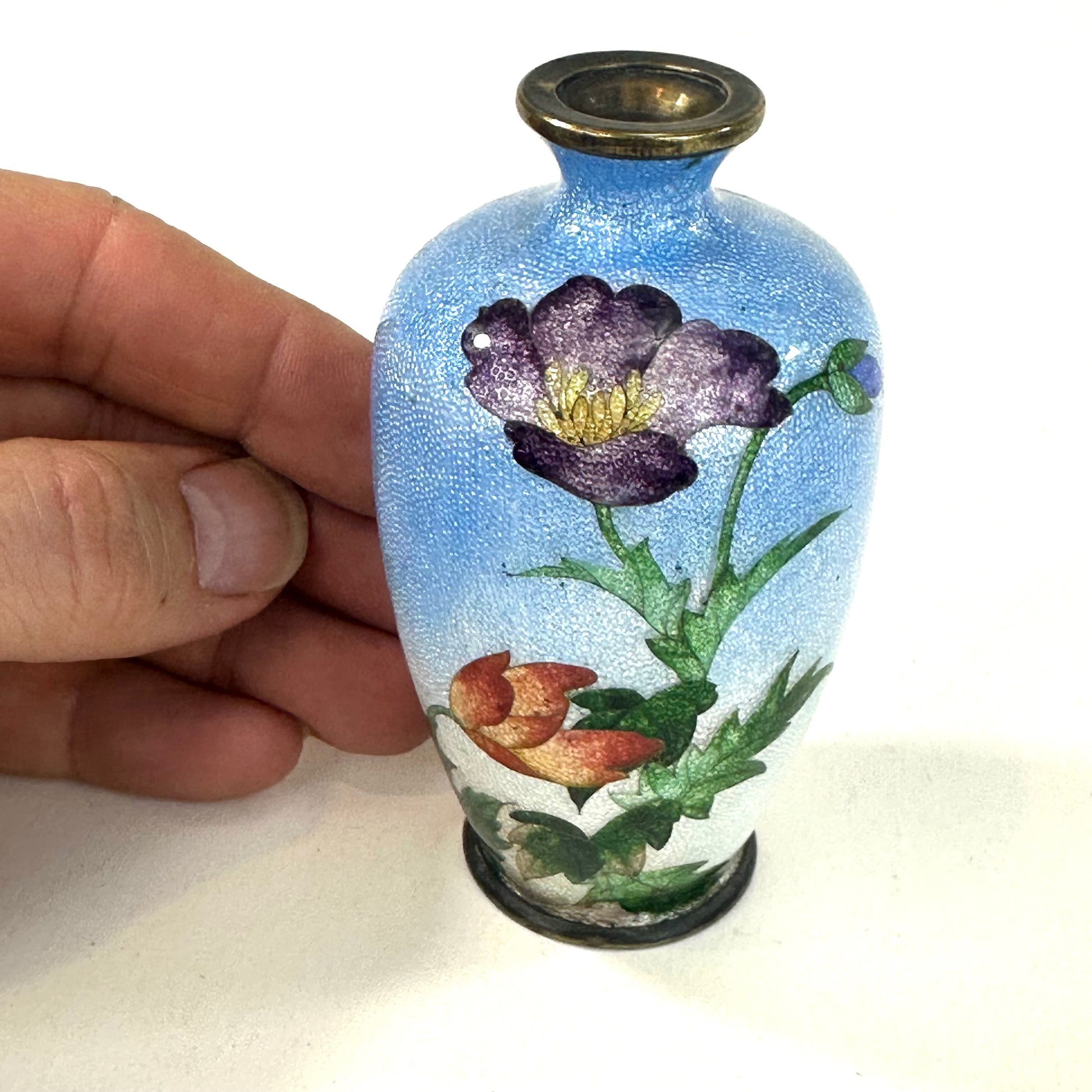Antique Japanese Meiji Era (c1910) Signed Ota Toshiro Cloisonné Vase Sky Blue 3.5”
Antique Japanese Meiji Era (c1910) Signed Ota Toshiro Cloisonné Vase Sky Blue 3.5”
Couldn't load pickup availability
This is a beautiful Japanese Meiji era (c.1910) ornate cloisonné vase. The hand crafted decorations are of flowers on a brilliant metallic blue background.
Markings indicate this was made by the artist Ota Toshiro (1869-1940)
Made of copper, copper alloys and vitreous glass enamel.
This vase is about 3.5" tall by 2" in diameter (9 x 5 cm).
It weighs 2.6 oz. Having been carefully displayed for nearly five decades since acquired by a dedicated local collector, it remains in fine condition.
This is a perfect example of Meiji era Japanese cloisonné. This is one of over 100 beautiful examples of this exquisite Japanese art currently being offered by Shogun's Gallery.
Japanese cloisonné, known as "shippō-yaki," is a form of enamel art that has been practiced in Japan for centuries, characterized by its intricate designs and vibrant colors outlined by fine metal wires. The history of Japanese cloisonné is deeply intertwined with the country's cultural exchanges with China, where the technique originally developed. It was not until the Edo period (1603-1868), however, that Japanese artisans began to explore and refine the technique, initially creating small objects such as samurai sword fittings and religious artifacts. This period set the foundation for cloisonné's more detailed and sophisticated expressions that would evolve in later centuries.
The art form saw significant growth during the Meiji era (1868-1912), a time when Japan ended its isolationist policies and began integrating Western technology and aesthetics into its arts. Japanese cloisonné artisans started to innovate with bolder designs and a broader palette of enamel colors, spurred by increasing Western interest and the booming international trade. Iconic innovations from this period include the use of translucent enamels and the development of the "wireless" cloisonné technique (musen shippō), which allowed for smoother surfaces and more pictorial, detailed artworks. These pieces often featured scenes from nature, such as flowers, birds, and landscapes, reflecting both traditional Japanese sensitivity and newfound techniques.
Today, while the number of craftsmen and production levels have declined, Japanese cloisonné remains highly esteemed as a traditional craft that showcases the high level of skill and artistry of its makers. Modern collectors and museums worldwide continue to celebrate and preserve this art form, drawn to its historical depth and unique beauty. Despite its reduced prevalence, Japanese cloisonné stands as a testament to Japan's cultural heritage and its ongoing dialogue between tradition and innovation in the arts.
